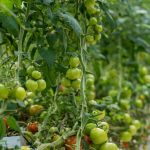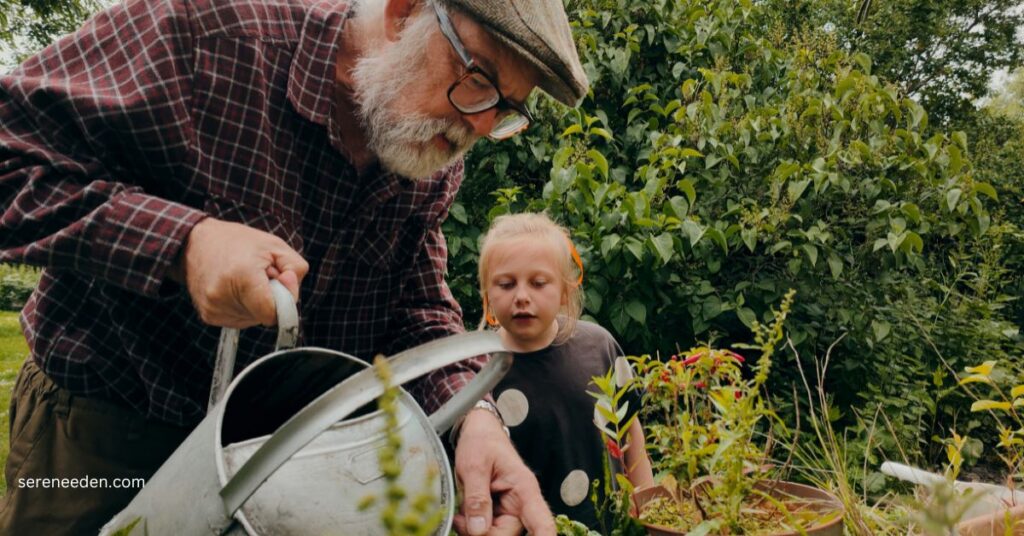Sustainable Gardening – How to Grow Green and Eco-Friendly
Sustainable gardening is about growing plants without harming our planet. It involves cultivating our gardens while conserving resources like water, avoiding harmful chemicals, and reducing waste.
Whether you grow plants on your balcony or patio, in your home garden, or on a large commercial farm, practicing sustainable gardening can make a big difference on our planet.
At this time, when everyone is talking about environmental conservation, sustainable gardening is of the highest importance. If you have not started, now is the time to act. Let’s explore some sustainable gardening practices.
What is Sustainable Gardening
Sustainable gardening involves growing plants for a long time without harming our environment or depleting natural resources. It’s about using gardening methods and materials that promote the health of our soil and even animals.
For example, using garden waste or food scrap from your kitchen to make compost, instead of buying chemical fertilizers or harvesting water from your roof or downspouts is sustainable gardening.
Sustainable Gardening Practices
While it’s impossible for everyone to completely transform into sustainable gardening, taking the first step can make an impact. Here are eight practices you can do to form a sustainable garden or backyard.
1. Conserving Water
Water is a precious natural resource in gardening, and conserving it is an important aspect of sustainable gardening.
You can help conserve water in your garden by applying efficient irrigation systems such as drip irrigation and soaker hoses that deliver water directly into the plants to minimize water wastage.
In addition, putting organic mulch at the base of your plants will help retain the soil moisture during dry periods.
Water your plants early in the morning or afternoon to reduce evaporation. Use barrels or downspouts to collect runoffs from your roofs to get a free and sustainable water source.
2. Incorporate Native Plants in Your Garden
Incorporating native plants in your garden or yard can help keep your garden sustainable. Native plants are naturally adapted to your local soil and climate, meaning they require less watering, fertilization, and pest control.
When we include native plants in our gardens, we are attracting pollinators like bees and butterflies and also supporting the natural habitat of wild animals.
3. Biodiversity
A diverse garden is a healthy and sustainable garden. It involves planting a variety of plants, such as perennials, annuals, shrubs, trees, and ground covers. This will help attract different types of wildlife and pollinators.
4. Organic Gardening
Organic gardening involves growing plants without using synthetic chemicals such as fertilizers, pesticides, or genetically modified organisms (GMOs). Instead, it focuses on using natural fertilizers such as manure and natural pest control methods like introducing beneficial insects.
5. Maintaining Healthy Soil
Soil is one of our planet’s important natural resources. Healthy soil is the foundation of any sustainable garden. It helps sustain plants, organisms, and humans. You can improve your soil’s health by adding compost and practicing crop rotation. This will help reduce the use of chemical fertlizers and promote healthy plant growth.
6. Reducing Wastes
Reducing waste in our gardens is an important aspect of sustainable gardening that helps eliminate landfill waste. You can use food scraps from your kitchen or garden waste to make compost.
Additionally, you can practice upcycling in your garden. This simply means re-using some of the materials that you no longer use and making them useful in our gardens while at the same time reducing the cost of buying new ones.
For example, you can turn old containers into planters and lumber or reclaimed wood for garden beds.
7. Natural Pest and Diseases Management
Integrated pest management involves monitoring, preventing, and using less toxic methods, such as rotating crops and introducing beneficial insects to eliminate pests. It combines biological and cultural methods to manage pests in a humane and environmentally friendly way.
In addition, you can choose to grow plant varieties resistant to pests and diseases to reduce the need for chemical treatments. This approach is also highly effective.
8. Companion Planting
Companion planting involves growing plants that benefit each other to repel pests, enhance their growth, or improve soil health. For example, you can grow basil as a companion plant for tomatoes to improve their growth and flavor.
What Plants are Best for a Sustainable Garden?
Plants that are best for a sustainable garden include native plants because they are already adapted to local climates and thus require less to no use of chemical fertilizers and pesticides. Edible plants like kale and tomatoes which give us fresh produce while reducing your carbon footprint.
Additionally, perennials like daylilies and hostas, and ground covers are also good for a sustainable garden. Not forgetting low-maintenance plants that require less watering which saves on resources.
Why is Sustainability important in Gardens?
When you incorporate sustainable gardening practices in your garden, such as reducing the use of chemicals, conserving resources, and growing native and drought-tolerant plants, you help minimize negative impact on the environment.
Author Profile

- 🌿 Hello! I'm Mary, the nature-loving soul behind Serene Eden. Gardener, plant whisperer, compost connoisseur, sun-soaked plant enthusiast, and avid bee-watcher. Let's cultivate beauty, one bloom at a time. 🌱🌼
Latest entries
 Sustainable gardeningSeptember 2, 2024What is Sustainable Gardening?
Sustainable gardeningSeptember 2, 2024What is Sustainable Gardening? CypressAugust 7, 2024Leyland Cypress Tree – How to Grow and Care for leyland Cypress
CypressAugust 7, 2024Leyland Cypress Tree – How to Grow and Care for leyland Cypress Vegetable GardeningJuly 4, 2024Determinate Vs. Indeterminate Tomatoes
Vegetable GardeningJuly 4, 2024Determinate Vs. Indeterminate Tomatoes Vegetable GardeningJuly 3, 2024Growing Tomatoes in Pots – 9 Expert Tips for a Big Harvest
Vegetable GardeningJuly 3, 2024Growing Tomatoes in Pots – 9 Expert Tips for a Big Harvest

